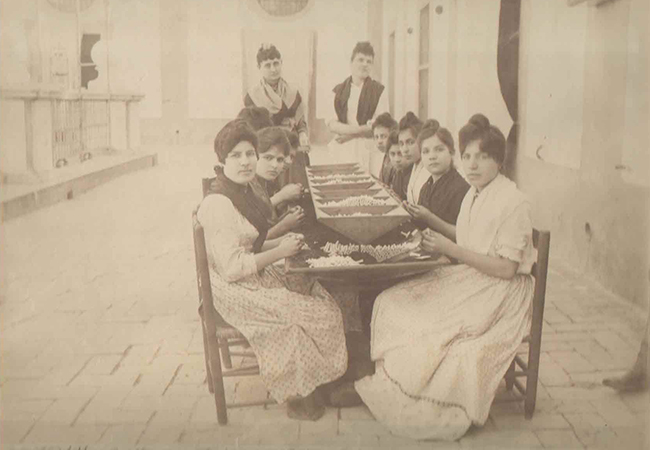
Introduction
The photographic archive (fototeca) of the University allows, through its portal, the access to the information of the photographic funds digitized by the Department of Art History, thus allowing the dissemination of the valuable material that Don Francisco Murillo Herrera would begin to compile and classify a century ago.
It is a documentary fund made up of images in different supports. Having been a pioneer of its kind in Spain, it has become a reference for researchers and teachers, constituting a primordial information source on all aspects of the History of Art in Andalusia and the rest of Spain. It seeks to promote the disclosure of its funds, enabling the consultation of all the images digitized so far, as well as managing their reproduction.
From a technical point of view and depending on the media, we can make two large groups of its content. The first one would consist of genuinely photographic images in negatives of different supports, mainly acetates and glasses covering all the historical sizes that go from 35 m/m to what we could consider as gigantic, 30 x 40 cm. Also, medium formats and professionals 9 x 12, 13 x 18 and 18 x 24 cm.
This covers a geographical segment that ranges from local images to many national, European, Hispano-american, etc. It is a collection of approximately 32,000 high value negatives that are maintained in a varied state of conservation but, in general, quite critical, due to the nature of their own components and materials.
The second group would consist of positive images supported, mostly on paper or cardboard and, although not all, the majority has a photographic nature. Other techniques would be engraving and lithographs as well as some different modalities. They are grouped in thematic series and other types of classification according to the needs.
Many of these images belong to foreign collections of well-known commercial firms such as Alinari brothers, George Braum and other photographers who worked in Spain during the 19th century such as Clifford, Laurent, L. Levi. There are also local photographers such as Almela brothers, the Beauchy saga, Garzón, Linares and others, as well as the national archives Ruiz Vernacci and Archiu Mas, or legacies such us the one of Sebastián de Barandarán y Hernández Díaz.
The collection preserves a lot of photographic documentation of Andalusian works of art destroyed during the Spanish Civil War, as well as photographic witness of buildings that today we can no longer appreciate.
History
It is one of the fundamental components of a project begun in 1907 by Don Francisco Murillo Herrera in order to create a documentary database of images that, as a complement to a large library of artistic subjects, constituted the basic structures of an Art History Department.
What in its beginnings was developed as a self-taught and self-financed thing to cover the teaching needs of Murillo Herrera’s Chair, later on, became a very important repository for the knowledge of our contemporary history, developed over the years thanks to the work of many people.
The collection was initially formed by Murillo Herrera’s own work as a photographer and later, thanks to the collaboration of many close associates and researchers: Diego Angulo, Marco Dorta, Bago y Quintanilla. Also, donations and contributions of friends and professionals such us Gonzalez Nandin, Alejandro Guichot, Salas, Bustamante, Palau, Arenas…
In 1998, in anticipation of an irreparable loss of images, it started the digitization and accommodation of all negatives in more appropriate containers. Information was also inserted in a database, that would allow to better manage this heritage. At the moment, the collection is increased thanks to new donations either by researchers, anonymous collectors or institutions. Among them, the donation made by Colegio de Nuestra Señora del Águila.
The SGI Fototeca-Laboratorio de Arte (where photographic library have been managed) has been able to implement its inscriptions thanks to its participation in various national and regional funding programs (FEDER 2011, 2013 and 2014). That made possible to adapt the place to the requirements established in the National Plan for the Conservation of Photographic Heritage.
Further Information
Location
Centro Internacional de la US
Avda. Ciudad Jardín, 20/22. 41005. Sevilla.
Opening hours
Digital resource
Website
https://citius.us.es/fototeca/
Director
Ángel Justo Estebaranz
Technical team
Alfonso Ojeda Barrera
